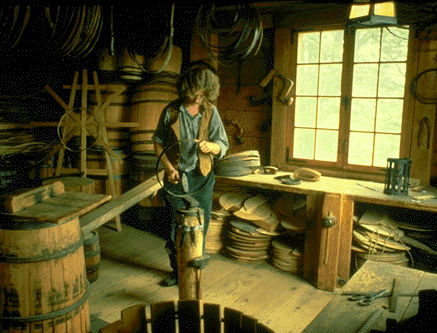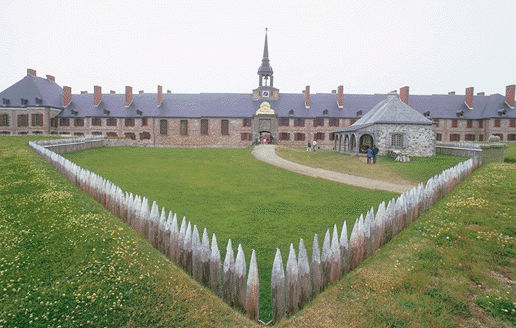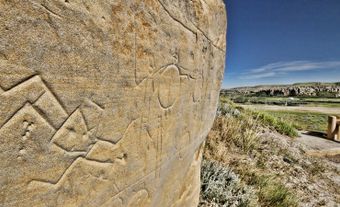
Buildings
Many buildings have been designated as historic sites because of their association with the past. Buildings may be valued because of their age or architecture (e.g., old railway stations, government buildings, houses), because they are linked to important individuals (e.g., Perkins House, Haliburton House, McCulloch House), or because they represent an important aspect of Canada's history and culture (e.g., Banting House, where insulin was discovered). Sometimes, entire streetscapes (e.g., Great George Street in Charlottetown) or districts (e.g., Dawson, old Quebec City) are designated historic places. Historic buildings are often restored and used as hotels, museums, or tourist attractions. Historic canals, lighthouses, cemeteries and fortifications are other examples of built heritage that is commonly designated.
Archaeological Sites

Writing-on-Stone Provincial Park features thousands of pictographs and petroglyphs on sandstone cliffs.
Many archaeological sites that illustrate important moments in Indigenous and European history are historic sites. They usually include structural remains (e.g., L'Anse aux Meadows), artifacts (e.g., Debert archaeological site), or rock art (e.g., Áísínai’pi). These remains are interpreted through archaeology. Some of these places, such as Áísínai’pi (Writing-on-Stone) and Serpent Mounds, remain sacred to Indigenous peoples.
Battlegrounds and Landscapes

Some places that do not necessarily contain historic buildings, structures or objects are also declared historic sites. These sites have been the scene of important events or they are associated with a cultural group or tradition. For instance, many places have been commemorated because historic battles were fought there. Other examples include rural landscapes such as the Central Experimental Farm in Ottawa, which reflects the 19th century philosophy of agriculture, historic gardens and Indigenous cultural landscapes (e.g., Kejimkujik).
Individuals
Prominent individuals, such as prime ministers, or political, military or religious figures, may also be designated under the national historic site program. In most cases, commemorative plaques are erected at a location associated with them. For example, there is a plaque commemorating Dr. Jennie Trout, Canada’s first licensed medical doctor, outside Kingston Women's Medical College, which Dr. Trout helped fund.
Events
Events in Canadian history are also celebrated through historic site designations. These include Thule migration, Basque whaling, the entry of women in the military, the Palliser Expedition to the Rocky Mountains and the establishment of the Intercolonial Railway.

 Share on Facebook
Share on Facebook Share on X
Share on X Share by Email
Share by Email Share on Google Classroom
Share on Google Classroom


